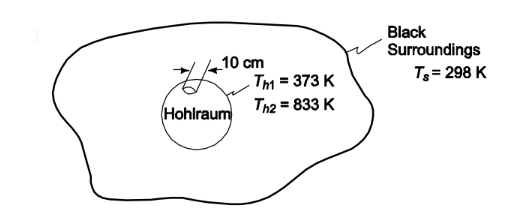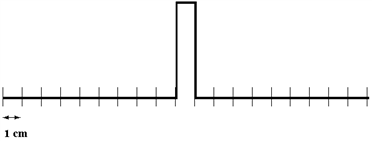How fast have we made subatomic particles travel inside particle accelerator?
A) within 0.00001% of the speed of light
B) exactly the speed of light
C) faster than the speed of light
D) no more than half the speed of light
E) no more than one-tenth the speed of light
A) within 0.00001% of the speed of light
You might also like to view...
For an ideal radiator (hohlraum) with a 10-cm-diameter opening, located in black surroundings at 16°C, (a) calculate the net radiant heat transfer rate for hohlraum temperatures of 100°C and 560°C, (b) the wavelength at which the emission is a maximum, (c) the monochromatic emission at ?max, and (d) the wavelengths at which the monochromatic emission is 1 per cent of the maximum value.
GIVEN
• An ideal radiator (hohlraum) in black surroundings
• Radiator opening diameter (D) = 10 cm = 0.1 m
• Surrounding temperature (Ts) = 16°C = 289 K
• Hohlraum temperatures
- Th1 = 100°C = 373 K
- Th2 = 560°C = 833 K
FIND
(a) The net radiant heat transfer rate (qr)
(b) The wavelength at which the emission is maximum (?max)
(c) The monochromatic emission at ? max (E?max)
(d) The wavelengths at which the monochromatic emission is 1% E?max
SKETCH

PROPERTIES AND CONSTANTS
the Stephan-Boltzmann constant (?) = 5.67 × 10–8 W/(m2 K4)
Which stars spend the shortest amount of time as protostars?
A) the most massive stars B) the least massive stars C) Mass doesn't matter, all stars spend about the same amount of time as protostars.
The Permian extinction predominantly affected
A) reptiles. B) marine life. C) insects life. D) terrestrial life.
Two pulses are traveling towards each other at 10 cm/s on a long string at t = 0 s, as shown below.
A.

B.

C.

D.

E.
